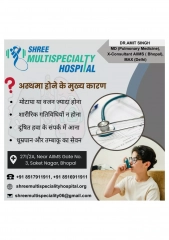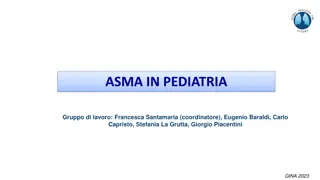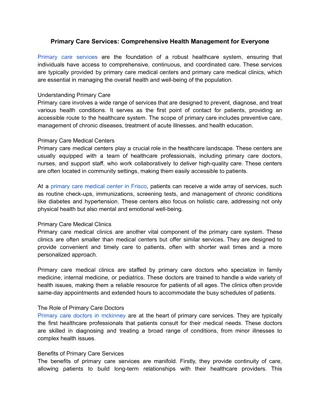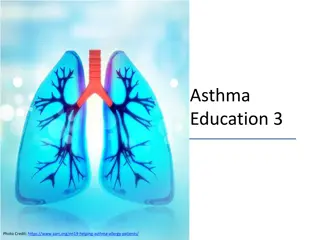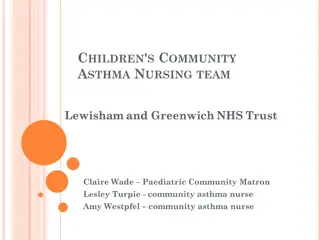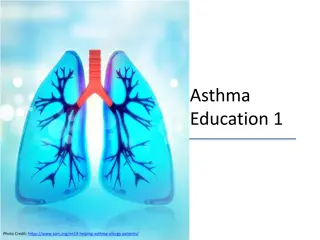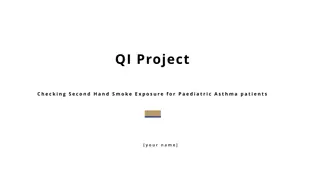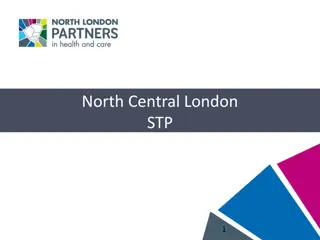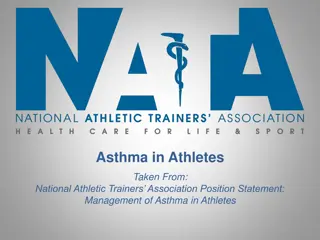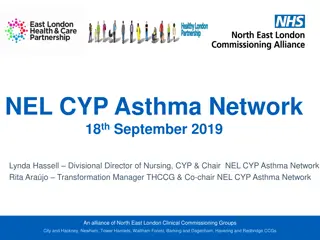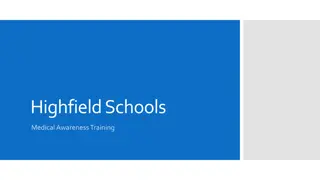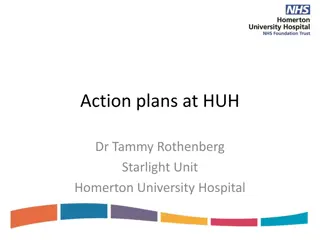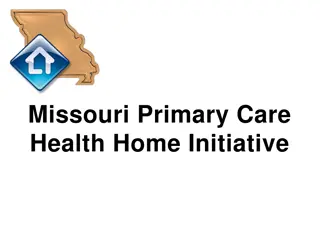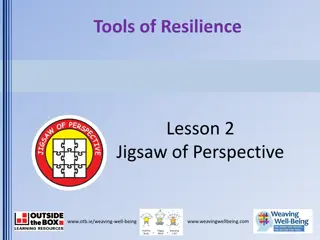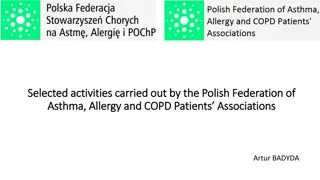Novel Jigsaw Puzzle Approach for Asthma Diagnosis in Primary Care
Development of a unique jigsaw puzzle method for diagnosing asthma in primary care settings revealed challenges in accurately identifying the condition due to common respiratory symptoms, normal physical examinations, and inconclusive test results. Overdiagnosis and underdiagnosis of asthma were highlighted, emphasizing the need for a more precise diagnostic approach to avoid risks to patients.
Download Presentation

Please find below an Image/Link to download the presentation.
The content on the website is provided AS IS for your information and personal use only. It may not be sold, licensed, or shared on other websites without obtaining consent from the author. Download presentation by click this link. If you encounter any issues during the download, it is possible that the publisher has removed the file from their server.
E N D
Presentation Transcript
Building a diagnostic picture of asthma in primary care: Development of a novel jigsaw puzzle approach Dermot Ryan, Si n Williams, Janwillem Kocks, Jaime Correia de Sousa International Primary Care Respiratory Group, Edinburgh, UK
Declarations Declarations The Asthma Jigsaw Project was jointly funded by GlaxoSmithKline, AstraZeneca and Vitalograph IPCRG convened the Steering Group and designed and implemented the development strategy
An unknown figure in a Jigsaw puzzle An allegory for Asthma diagnosis
Building a diagnostic picture of asthma in primary care: Development of a novel jigsaw puzzle approach Asthma presents with common respiratory symptoms and physical examination is often normal; in addition, the most widely available tests (peak flow and spirometry) can be normal unless the patient is exacerbating. Treating asthma prior to carrying out objective tests decreases their sensitivity and can make confirmation of the diagnosis difficult. There is no single gold standard test to diagnose asthma, and there are significant differences between the suggested algorithms in commonly used guidelines. Both under- and over-diagnosis are widespread and lead to significant risks to patients. adapted from Breathe 2019; 15: e20 e27.
Background Asthma overdiagnosis Reevaluation of diagnosis in adults with physician-diagnosed asthma GP referral Definite asthma 43 Asthma Diagnostic Consultation Service No Airway Narrowing 11 Multicentre cohort study, enrolling 701 randomly selected adults with physician-diagnosed asthma in the previous five years 33% not asthma Asthma 17 62% not asthma Referred with Asthma n=644 Confirmed asthma n=277 No asthma n=338 Diagnoses rhinitis n=99 Other 6 Restrictive 9 GP Referral Suspected asthma 99 Findings: GERD n=55 current asthma was excluded in 33% of the 613 participants who completed the study post infectious cough n=54 smokers cough n=15 Non pulmonary diagnosis n=39 No Airway Narrrowing 70 Asthma 11 28% asymptomatic 88% not asthma 55% not asthma Restrictive 7 COPD 2 25% rhinitis Other 9 Gillis et al. PCRJ 2017 Starren et al PCRJ, 2012 Aaron SD et al. JAMA 2017; 317(3): 269 279.
Large Educational Need Ryan D et al. Results of an allergy educational needs questionnaire for primary care. Allergy. 2017 Jul;72(7):1123-28. doi: 10.1111/all.13134.
These pieces dont seem to make much sense, do they? What could this be? http://www.jigzone.com/puzzles/BA055D4CF4A2
Some people prefer starting with the corners - the clear and safe clinical signs and symptoms Chest tightness Breathlessness Cough Wheeze
Sometimes we find clinical clues that are so relevant, they almost allow us to see the whole picture right away. Airway dysfunction
We can also slowly build the diagnosis from the edges to the centre
And, meanwhile, find the more relevant clinical clues confirming our reasoning
Even if not all the clinical signs and symptoms are present, the diagnosis can be obvious.
Some clinical signs and symptoms might not fit at all in the overall picture. GERD Lung cancer
Now we are really sure GERD Lung cancer
Half Half- -day jigsaw workshop day jigsaw workshop Four working groups in two rounds negotiated and prioritized jigsaw pieces most relevant for building a clinical picture of asthma Symptoms and physical examination Presentation History Objective tests
JIGSAW PIECE: Occupation JIGSAW PIECE: Occupation WHY? How will it influence decision- making? HOW? How will you elicit it? (question, test, observation, other); How will you interpret the answer? How will you code it? WHEN? When would you ask? (first consultation, subsequent, every time, once ) WHO? All, child, adult, sub-group?
Building the jigsaw puzzle Building the jigsaw puzzle A single comprehensive jigsaw puzzle was formed through debate about the relative importance of collecting jigsaw pieces over time This process can be repeated and contextualized at national level https://www.youtube.com/watch?v=jguPHc8XHDE
Defining the content for asthma diagnosis Defining the content for asthma diagnosis Symptoms and physical examination Presentation History Objective tests Why has the person come to see you? Ask about symptoms and conduct physical exam Bronchodilator responsiveness (spirometry preferred) Personal and family Examples: Tight chest Wheeze Cough Infection Breathless Chest pain Examples: Occupation Atopy Smoking Hobbies Rhinitis Examples: Wheeze Night-time symptoms Fatigue Exercise intolerance Alternative tests of BD responsiveness Serial peak flow Microspirometry Other: FeNO, biomarkers These factors and their relative importance may differ at national level BD, bronchodilator.
Conclusions Conclusions The asthma jigsaw puzzle is a new teaching and learning strategy Created using a context-specific development process Enables PCPs to visualize the clinical picture and decide on the likelihood of an asthma diagnosis before taking action Further tools using the jigsaw metaphor are now under development PCPs, primary care practitioners.
Acknowledgements Acknowledgements With grateful thanks to our Steering Committee members Izolde Bouloukaki Monica Barne Erol Gaillard Anders Ostrem Kerstin Romberg Vince Mak Cristina Isar Luke Daines Antonio G Caviglia
Now we will gather around and Now we will gather around and discuss the infographic discuss the infographic


